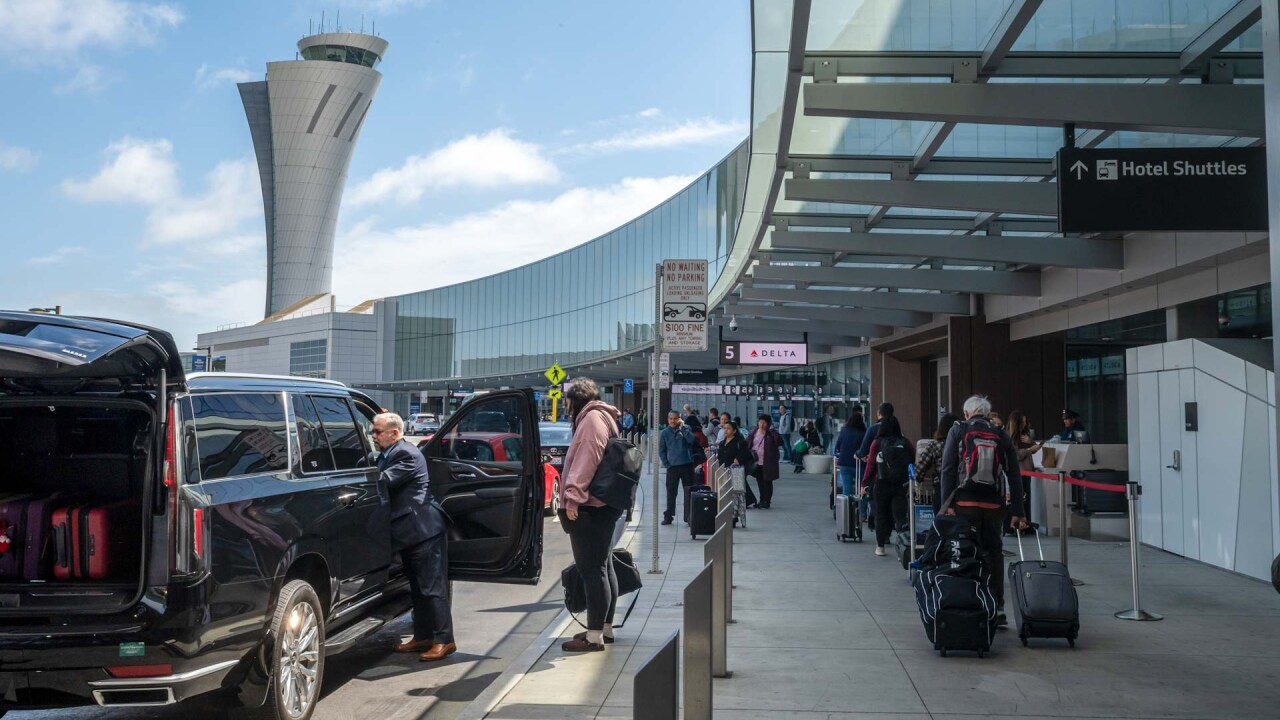Want unlimited access to top ideas and insights?
The long-running default of bonds issued to build a toll bridge in northeast Florida may come to a head this year as state lawmakers weigh making it a state-owned facility.
Bondholders, who technically own the Garcon Point Bridge because of the default, may get to decide the fate of the 3.5-mile span, a decision that would depend on their willingness to take a haircut.
Bills that would restructure the Santa Rosa Bay Bridge Authority’s bonds are among hundreds of measures that state lawmakers will consider in the next two months. The Florida Legislature’s session started Tuesday.

The authority has $132.2 million of debt outstanding. Under the most plausible restructuring scenario the state may consider, bondholders could be offered haircuts of between 27% and 45.5%.
Sen. Doug Broxson, R-Pensacola, and Rep. Jayer Williamson, R-Pace, who are from the panhandle region where the bridge is located, filed bills based on an
Broxson, who did not respond to a request for comment, said in a written statement to local media in northwest Florida that his bill will allow lawmakers “to begin the long awaited discussion on the future of the Garcon Point Bridge.”
“This bill will enable us to avoid the costly court fights and future litigation with the bondholders, and the real risk that the bondholders can force significant toll increases on our community,” he said.
The 92-page feasibility study, authored by the Florida Division of Bond Finance, details the pros and cons of maintaining the status quo, as well as using tender offers or issuing bonds through the Florida Turnpike Enterprise to buy the bridge from bondholders at a negotiated price.
“This doesn’t presume taking out the debt at par,” said DBF Director Ben Watkins. “One of the fundamental elements of this plan is that the bondholders are going to take a haircut.”

The primary benefit to the state, Watkins said, is avoiding perpetual litigation about toll rate increases and the state’s responsibility.
Another benefit, according to the study, is avoiding the cost of maintaining the bridge beyond its useful life should the debt remain outstanding for the next four decades because tolls aren’t sufficient to repay the debt on the original back-loaded debt service schedule.
Watkins said he is not advocating for or against a plan to purchase the bridge, and that he tried to present a balanced and neutral study that provides lawmakers with options that protect the state.
“I did try to lead them to a place where, under the right circumstances, this would be a way to resolve this long-running problem to clean it up while not imposing a toll increase to artificially inflate what bondholders would get paid,” he said.
Under that scenario, the turnpike would issue between $75 million and $100 million of AA-rated, 30-year bonds with level debt service and customary debt service coverage. The ultimate issue size depends on estimating the gross toll revenues of the bridge without any toll rate increase.
“It’s clear to me from a policy perspective about the state bailing this out and making a contribution” to pay off the existing bondholders, Watkins said. “The state can assume no financial responsibility for this.”
There is no appetite for raising tolls to increase what the state would pay for the bridge, he added.
Bond proceeds would provide a cash payment to existing bondholders that would impose a haircut of approximately $35.2 million to $60.2 million.
As an added component, the study said the turnpike could also issue a subordinate series of non-recourse bonds secured by residual toll revenues – if there are any. Watkins said these most likely would be non-rated.
“In effect, the subordinate limited obligation bonds would be used as a vehicle to compensate existing bondholders for, and insulate turnpike from, the financial risks associated with the bridge,” the study said. “Investors took on the revenue growth risks when purchasing the authority’s debt, and they will retain that risk under this structure.”
Although the subordinate piece would place bondholders in the same position they are currently in, Watkins called the potential cash payment and subordinate bond offer “a very fair deal,” and one that the trustee could use to convince bondholders to accept.
Although the concept of a “bailout” would not apply to many bond issues, Watkins pointed out the Garcon Point Bridge was a startup toll facility, and as such the original high-yield bonds sold at interest rates ranging between 6.25% and 6.80%.
“No bondholder bought this with a gun pointed at their head,” he said, while adding that some retail purchasers may not have been aware of all the risks. When they were issued, the bonds carried investment-grade ratings of BBB-minus from Standard & Poor's and BBB from Fitch Ratings.
Before any deal is brought to bondholders, the Legislature must pass either Senate Bill 1436 or House Bill 1281.
The identical measures would authorize the Florida Department of Transportation to purchase the bridge by acquiring the SRBBA’s outstanding bonds for an amount that does not exceed the forecasted gross revenues of the bridge. The bills prohibit any toll rate increase in connection with the acquisition.
That doesn’t mean tolls will never go up.
“Following any acquisition by the department, an increase in tolls for use of the bridge shall not be permitted except as required by law or as required to comply with the covenants contained in any resolution under which bonds have been issued,” according to the bills.
The turnpike requires tolls to be indexed to inflation, a standard that applies to its debt and facilities, “and presumably” that would include the Garcon Point Bridge, Watkins said.
Florida could face substantial legal and maintenance costs if the bonds remain outstanding.
The feasibility study estimates that it will not be until 2064 that the SRBBA debt is paid off under the current rate of toll collections. The bonds were originally issued in 1996 with final maturity in 2028 – a 32-year life.
Leaving the debt outstanding through 2064 would bring the debt service schedule well past the expected useful life of the bridge.
FDOT would be legally required to pay for the ongoing operations and maintenance as it does now, and “may be required to make capital improvements to extend the remaining useful life of the bridge until the bonds have been paid off,” the study said.
“If the state does nothing, FDOT will likely be sued by the bond trustee in an effort to force an increase in the toll rates on the bridge,” it said. “The resulting litigation will likely be time consuming and expensive.”
In 2015, the Bank of New York Mellon, the former bond trustee, threatened to sue the state if FDOT did not raise tolls to $5 each way from the current $3.75. At the time, there was no bridge oversight board to perform that function.
The FDOT said it did not have authority to raise toll rates, either under its current lease-purchase agreement to provide O&M or the bond resolution.
BNY Mellon resigned as trustee in July 2016, and was replaced by UMB Bank NA of Minneapolis.
Despite the change in trustee, the feasibility study said the possibility of a lawsuit over tolls will haunt the state as long as the bonds are outstanding.
The feasibility study also chronicles historical decisions that doomed the SRBBA’s finance plan, including traffic and revenue that significantly underperformed the original estimates, leaving the authority insolvent.
The authority's board members last met in 2014. After that, they resigned rather than increase tolls.

The use of an “aggressive ascending debt service structure” and non-callable capital appreciation bonds - both of which are contrary to state policy - also contributed to payment defaults in January 2012, July 2012, and January 2013 after the debt service reserve was exhausted.
The trustee accelerated the bonds on Jan. 1, 2013, declaring all principal immediately payable. Interest continues to accrue.
To build the bridge, the SRBBA in 1996 issued $75.5 million of fixed, current-interest bonds and $19.5 million of capital appreciation bonds.
While the current outstanding amount has morphed into $132.2 million, the CABs will boost the total amount rapidly due to the accretion of interest, the value of which increases at a compounded rate.
Prior to the bond sale, initial discussions led state officials to believe the debt would be sold only to sophisticated institutional investors.
"Ownership of the bonds is scattered and very diverse," the feasibility study said.
The Division of Bond Finance believes “a material amount of the bonds were initially sold to or are currently held by retail investors, many of whom are likely to be Florida residents,” according to the study.
“This deal was shaky at best, but pretty speculative for safety,” Watkins said.
The Garcon Point Bridge is nicknamed “Bo’s Bridge,” for former House Speaker Bo Johnson.
Johnson shepherded the project through the legislative approval process in the late 1980s believing that development would come to the isolated area where the bridge was built.
The development never materialized, and neither did the traffic on which the finance plan depended. Johnson was convicted of tax evasion shortly after the bridge opened in 1999.
Local drivers like the scenic 3.5-mile bridge because it provides a shortcut between Milton and Gulf Breeze and a more direct route between Interstate 10 and U.S. 98.
But they have long decried the $3.75 one-way tolls as too high for daily commutes.





